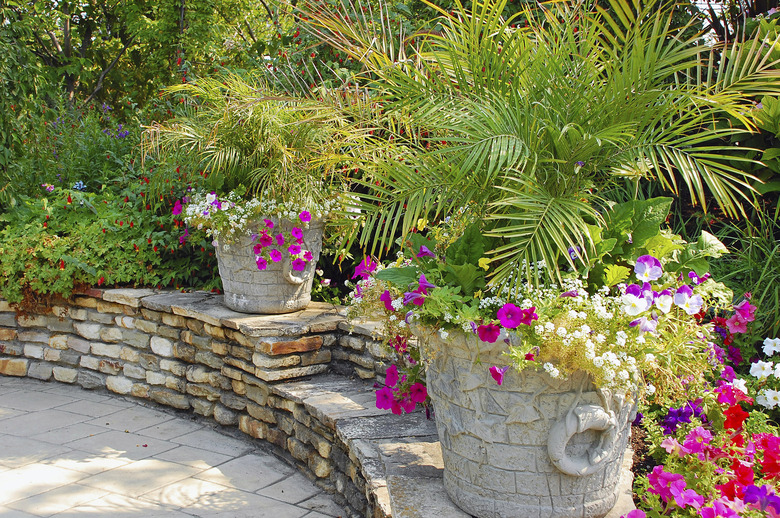How To Mix Perlite And Cement
Things Needed
-
Wheelbarrow or cement mixer
-
Garden hoe
Tip
An air entrainment admixture product can be added to help prevent cracks in perlite concrete, particularly when you use it for walking surfaces in areas with freezing winters. The exact amount of the air entrainment product varies greatly and must be determined by the cement supplier.
To make a simple planter with perlite concrete, find two molds of different sizes. Add 1 to 2 inches of the concrete mix to the bottom of the larger mold container, place the smaller container inside the larger container, and fill in the space between the two containers with the wet perlite concrete mix. Wrap the containers with plastic and allow the concrete to harden and cure for three days before releasing the planter from the molds.
Perlite concrete creates a lightweight concrete. It is not suitable for load-bearing applications, but commonly used for pool bases, roof decks and decorative purposes. Planters and statuary made with perlite concrete are porous and lightweight, providing ample drainage and making the objects easier to move. The ratio of cement to perlite depends on the insulation value and compressive strength you need — more perlite in the mix increases insulation and decreases compressive strength. A 1-to-6 ratio of cement to perlite balances insulation and strength, and is suitable for most gardening applications. The order in which you add the ingredients is most important to avoid degrading the delicate perlite.
Step 1
Pour 1 cubic foot of dry cement in a wheelbarrow or concrete mixing machine. A 94-pound bag of cement is equivalent to 1 cubic foot. Increase or decrease the amount of cement based on your actual needs, but use 1 cubic foot as a reference point to achieve the proper ratio of ingredients.
Step 2
Pour 13 gallons of water into the wheelbarrow or mixer. If you opt to make a smaller batch of perlite concrete, decrease the amount of water according to the decrease in cement. Add only 7 1/2 gallons of water, for example, if you use only half a bag of cement.
Step 3
Mix the cement and water until thoroughly combined. Mix with a garden hoe and shovel if you mix in a wheelbarrow, or turn the hand crank to tumble the ingredients inside a rotating concrete mixer. Scrape the sides of the wheelbarrow or mixer well to ensure all the dry cement is completely saturated.
Step 4
Pour 6 cubic feet of perlite into the wet cement mixture. Use only 3 cubic feet for half a 94-pound bag of cement, or 1 1/2 cubic feet when using one-fourth of the cement bag. Increase or decrease the amount of perlite as needed to achieve the desired insulation value and compressive strength. Perlite concrete mixed at a ratio of 1 part cement to 6 parts perlite has an insulation value, or "k" value, of 0.64 and a compressive strength of 125 to 200 pounds per square inch. At a ratio of 1 part cement to 4 parts perlite, you achieve a "k" value of 0.83 and compressive strength of 350 to 500 pounds per inch. At this ratio, you need only 10 gallons of water.
Step 5
Stir and turn the wet cement mix and perlite until the perlite is evenly distributed throughout the cement. Avoid overmixing the mixture or you can break down the structure of the perlite, which increases the density of the perlite cement.
